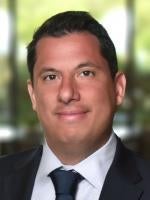On April 9, 2020 the Federal Reserve announced it was taking additional actions to provide up to $2.3 trillion in loans to support the U.S. economy, including:
- support for the Small Business Administration’s (SBA) Paycheck Protection Program by supplying liquidity to participating lenders backed by PPP loans;
- expanding recently-announced facilities supporting markets issuing credit to large businesses and related secondary markets (the primary and secondary market corporate credit facilities), as well as the term asset-backed securities loan facility; and
- establishing a municipal liquidity facility for assistance to state and local governments.
Among such actions is the creation of a Main Street Lending Program (Main Street Program) to provide financing to lenders that make direct loans to main street businesses. This emergency lending facility will support small and mid-sized businesses that were in good financial standing before the pandemic and that may be too small to access broader capital markets or the Federal Reserve’s facilities supporting larger corporates, or that may not qualify for the SBA’s Paycheck Protection Program. Hundreds of thousands of such businesses exist in the U.S., employing millions of workers. According to Treasury Secretary Steven Mnuchin, 40,000 mid-sized companies employing 35 million Americans stand to benefit from this program.
The Main Street Program utilizes seed capital from the Treasury’s Exchange Stabilization Fund made available under Title IV of the Coronavirus Aid, Relief and Economic Security Act (CARES Act). When leveraged by the Federal Reserve, this capital provides up to $600 billion in liquidity to participating lenders that provide qualifying loans to eligible businesses. Lenders are required to retain a 5 percent share of each loan, selling the remaining 95 percent to the Main Street Program. This program will cease participation on September 30, 2020 unless extended by the Treasury and Federal Reserve.
Eligibility
Eligible entities are businesses with up to 10,000 employees or up to $2.5 billion in 2019 annual revenues. Each such business must be created or organized in the U.S. or under the laws of the U.S. with significant operations in and a majority of its employees based in the U.S.
No guidance was provided as to whether affiliation rules may apply to these eligibility thresholds or how applicants must count their employees (e.g., full-time equivalents or full-time, part-time and other-basis employees like the SBA’s Paycheck Protection Program requires).
Loan Amounts
Loans are available at a minimum of $1 million, up to a certain maximum amount. For new loans (originated on or after April 8, 2020), the maximum amount is equal to the lesser of:
- $25 million; and
- an amount that, when added to the applicant’s existing outstanding and committed but undrawn debt, does not exceed four times 2019 EBITDA.
For upsizing existing loans (originated before April 8, 2020), the maximum total amount is equal to the lesser of:
- $150 million;
- 30 percent of the applicant’s existing outstanding and committed but undrawn bank debt; and
- an amount that, when added to the applicant’s existing outstanding and committed but undrawn debt, does not exceed six times 2019 EBITDA.
The leverage conditions could preclude highly-leveraged businesses from participating. As indicated above, participating lenders may originate new loans under the Main Street Program or use the Main Street Program to increase the size of existing loans to their eligible customers (in which case up to 95 percent of the upsized tranche may be sold to the Main Street Program). Also, small businesses that participate in the SBA’s Paycheck Protection Program may additionally take advantage of the Main Street Program. These programs are not mutually exclusive for businesses that qualify under both.
Additional Requirements
The following additional requirements apply to loans made under the Main Street Program:
- Proceeds may not be used to repay or refinance any other debt of the borrower.
- While the loan remains outstanding, the borrower may not repay any other debt of equal or lower priority, with the exception of mandatory principal payments.
- The participating lender may not cancel or reduce any existing lines of credit to the borrower, and the borrower may not seek to cancel or reduce any of its outstanding lines of credit with any lender (including the participating lender).
- The borrower must attest that it requires financing due to the pandemic and that it will make reasonable efforts to maintain its payroll and retain its employees during the term of the loan. No guidance was provided as to how this will be applied to businesses that have already furloughed or terminated employees.
- Any borrower whose securities are publicly traded must agree not to engage in stock buybacks for the duration of the loan plus one year (except to the extent required under a preexisting contractual obligation), and each applicant (i.e., whether or not public) must agree not to pay dividends on common stock for the duration of the loan plus one year. No guidance was provided as to whether exceptions to the dividend restriction will be implemented for tax distributions to owners of pass-through businesses such as S-corporations or LLC/partnerships.
- For the duration of the loan plus one year, the borrower must agree to the following:
- for any non-union employee or officer whose 2019 total compensation exceeded $425,000, total compensation for any 12-month period may not exceed 2019 total compensation levels;
- for any employee or officer whose 2019 total compensation exceeded $3.0 million, total compensation for any 12-month period may not exceed the sum of (i) $3.0 million plus (ii) 50 percent of the excess over $3.0 million;
- for any person in either of the above categories, severance upon termination may not exceed two times 2019 maximum total compensation.
Notably, the last two requirements as to stock buybacks, dividends and executive compensation are expressly dictated by the CARES Act. Also, the Federal Reserve is taking comments on the program’s terms and conditions until April 16, 2020 and may make adjustments. Any such adjustments will be publicly announced.
Application Fees and Process
Applicants must pay an origination fee equal to 100 basis points of the principal amount of the loan to be sold to the Main Street Program (i.e., up to 95 percent of the original principal amount of new loans or the upsized tranche, as applicable). Participating lenders must also pay a facility fee equal to the amount of the origination fee, and lenders are authorized to charge this fee to applicants. Further details for obtaining, completing and/or submitting applications for loans under the Main Street Program have not been released. Eligible entities should contact their existing lenders pending the release of any further guidance.
Potential applicants should be mindful of existing debt agreements, as well as provisions within their charters, operating agreements, shareholder agreements or other key contracts that may restrict their ability to borrow funds.






 />i
/>i

